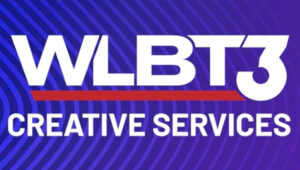
Viewers have fled primetime lineups for streaming outlets, with one notable exception: people over 60. In the most recent network television season, which ended in May, the median viewer was older than 60 for most entertainment shows, including Young Sheldon (“65+,” the highest range that Nielsen provides).
Brands work very hard to connect with the millennial generation, but baby boomers are large in number and have money to spend.
Per Mindshare, get ready for less focus on millennials (gasp!) and more on Baby Boomers. Another trend: More concern over respecting privacy concerns on social media.
 TV was key to the world baby boomers were born into: a newly modernized world where every problem (with the possible exception of the Cold War) seemed to point to a solution that was just around the corner. TV chronicled this bracing wave of wonder and potential, and built upon it as an essential part of what set boomers apart:
TV was key to the world baby boomers were born into: a newly modernized world where every problem (with the possible exception of the Cold War) seemed to point to a solution that was just around the corner. TV chronicled this bracing wave of wonder and potential, and built upon it as an essential part of what set boomers apart:
Though time spent varies, their media usage patterns are nearly identical. They’re using more multimedia devices and watching more mobile video while listening to less radio.
When it comes to where younger Americans get news about politics and government, social media look to be the local TV of the millennial generation. About 6-in-10 online millennials (61%) report getting political news on Facebook in a given week, a much larger percentage than turn to any other news source, according to a new Pew Research Center analysis. This stands in stark contrast to Internet-using baby boomers, for whom local TV tops the list of sources for political news at nearly the same reach (60%).
What Advertisers Don’t Get About Boomers
 They continue to target Baby Boomers with traditional media, when this group is extremely active on new media. Influence Central’s Stacy DeBroff talks about why this group loves technology, how they differ from Millennials, and what advertisers should be doing to target them.
They continue to target Baby Boomers with traditional media, when this group is extremely active on new media. Influence Central’s Stacy DeBroff talks about why this group loves technology, how they differ from Millennials, and what advertisers should be doing to target them.
Making The Case For Targeting Older Folks
 Two years from now, the last of the baby boomers will turn 50 years old, aging out of the key adults 18-49 demographic that became so popular among advertisers four decades ago when they began targeting the oldest of the boomers. That’s already leading to ventures like RLTV, which targets those over 50, and Huff/Post 50, aimed at boomers. Paul FitzPatrick, CEO of RLTV, talks about why advertisers undervalue older consumers, how this is changing and why it’s taken so long.
Two years from now, the last of the baby boomers will turn 50 years old, aging out of the key adults 18-49 demographic that became so popular among advertisers four decades ago when they began targeting the oldest of the boomers. That’s already leading to ventures like RLTV, which targets those over 50, and Huff/Post 50, aimed at boomers. Paul FitzPatrick, CEO of RLTV, talks about why advertisers undervalue older consumers, how this is changing and why it’s taken so long.
Time To Kick The 18-49 Bad Habit
On Dec. 31, 2013, the last of the Baby Boomers will turn 50 years old, and the most significant generational cohort in history will graduate from the 18-49 TV ratings category: the demographic group usually referred to by television journalists as “highly prized” or “most coveted.” With the Boomers moving into a new demographic, isn’t it time for reporters to stop fixating on 18- to 49-year-olds?
For decades the TV industry has operated on a currency of youth, creating shows that appeal to 18-49 year-olds, the age group advertisers traditionally consider most likely to buy new products, switch brands and spend on everything from cars to soft drinks. But as the nearly 80 million baby boomers continue to age out of the coveted demographic — the oldest boomers are turning 65 this year, the youngest 47 — networks want to charge advertisers more to reach them.









































